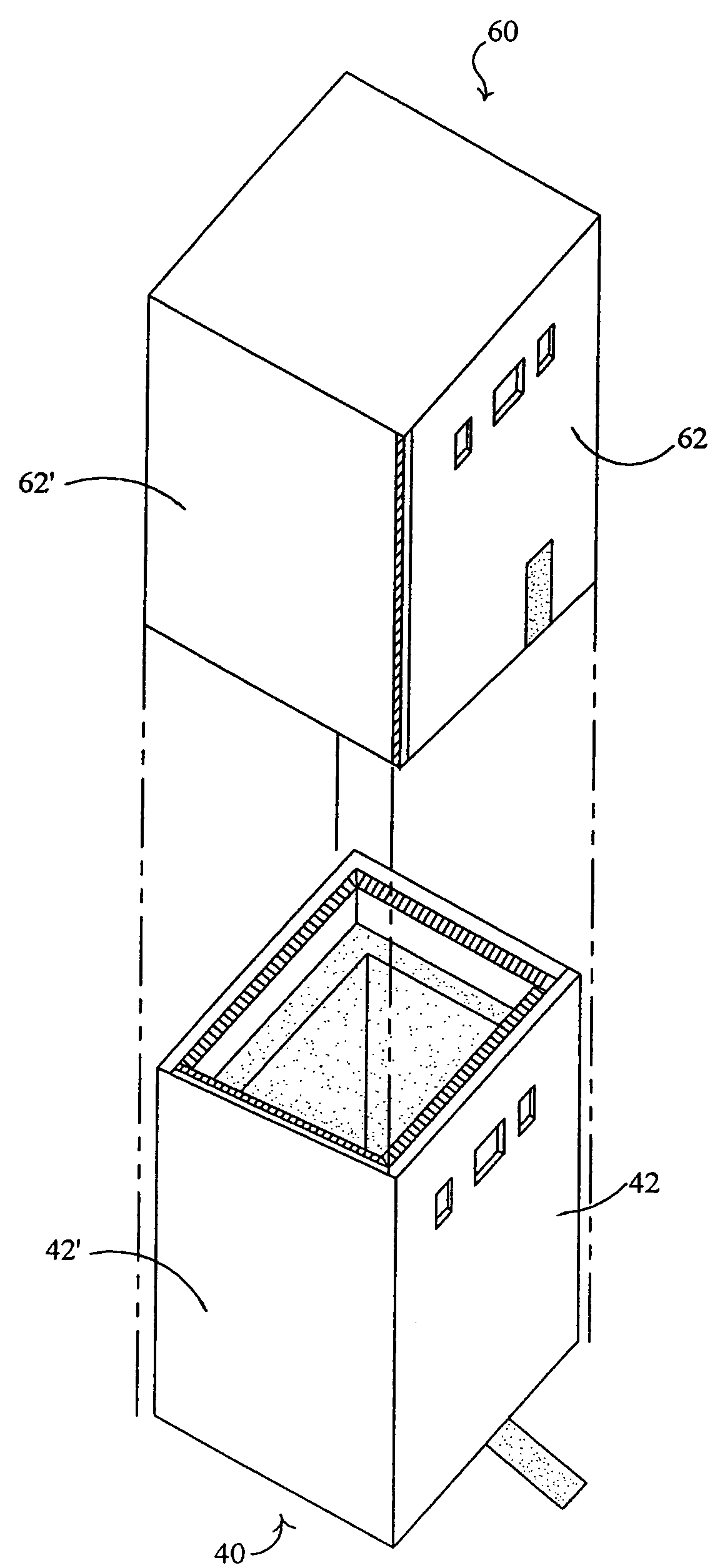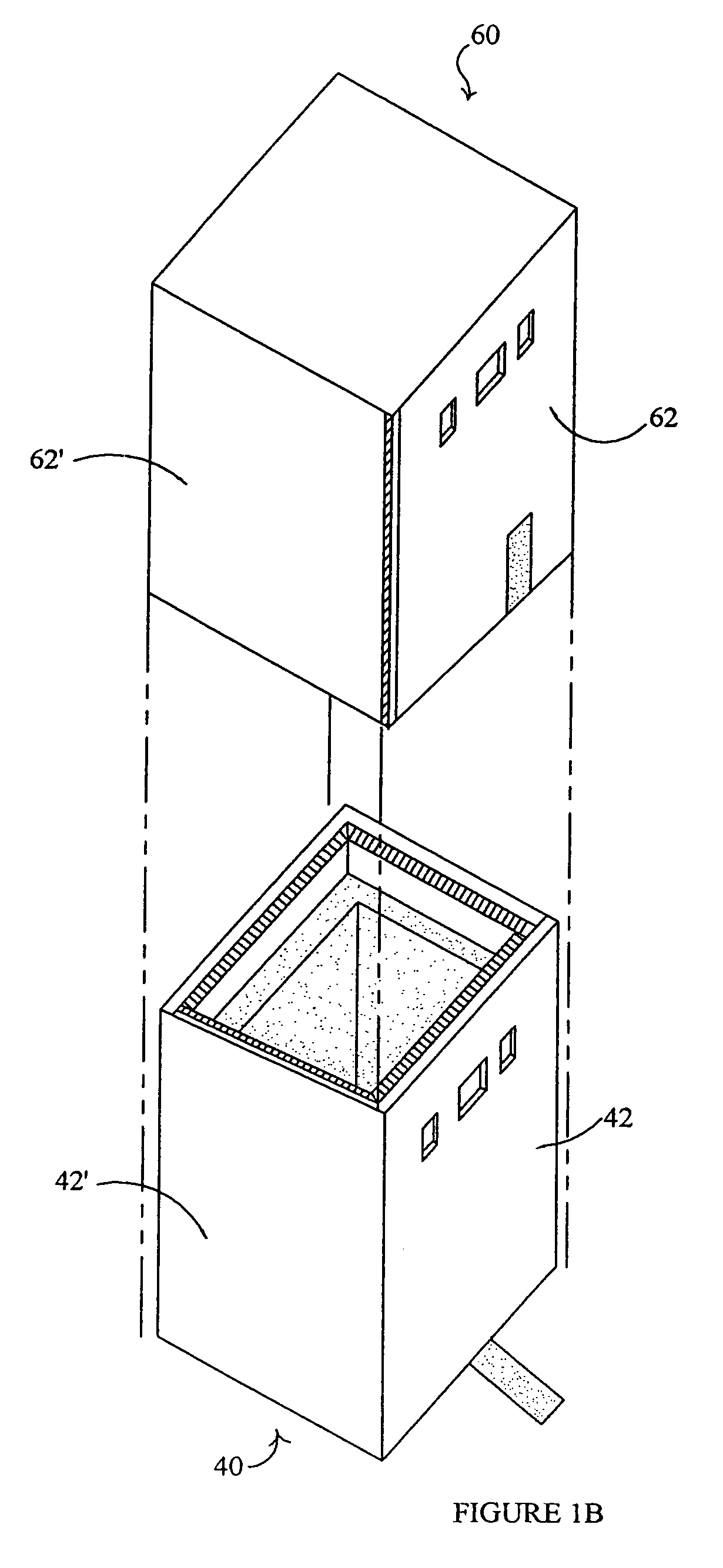Shock resistant box
a box and shock-resistant technology, applied in the field of boxes, can solve the problems of affecting the protection of boxes, affecting the quality of boxes, so as to reduce shipping damage to boxes, and reduce the need for thick internal padding
- Summary
- Abstract
- Description
- Claims
- Application Information
AI Technical Summary
Benefits of technology
Problems solved by technology
Method used
Image
Examples
Embodiment Construction
[0028]FIG. 1A schematically illustrates a shipping box assembly 52 with the upper portion thereof telescoped over the lower portion and secured by hook and eye releasable and reusable closure means 90. FIG. 1B schematically illustrates an exploded view of the box assembly 52 comprising a top portion 60 and a bottom portion 40. Top portion 60 comprises four top-portion side walls (shown in plan section in FIG. 3A in the form of a first substantially similar opposing pair of top-portion side walls 62,62 plus a second substantially similar opposing pair of top-portion side walls 62′,62′), and a top-portion top wall 64 (shown in elevation section in FIG. 2). As shown in FIG. 1A, top portion 60 and bottom portion 40 are each shaped as a hollow open-ended rectangular parallelepiped. Bottom portion 40 comprises four bottom-portion side walls (shown in plan section in FIG. 3B in the form of a first substantially similar opposing pair of bottom-portion side walls 42,42 plus a second substant...
PUM
 Login to View More
Login to View More Abstract
Description
Claims
Application Information
 Login to View More
Login to View More - R&D
- Intellectual Property
- Life Sciences
- Materials
- Tech Scout
- Unparalleled Data Quality
- Higher Quality Content
- 60% Fewer Hallucinations
Browse by: Latest US Patents, China's latest patents, Technical Efficacy Thesaurus, Application Domain, Technology Topic, Popular Technical Reports.
© 2025 PatSnap. All rights reserved.Legal|Privacy policy|Modern Slavery Act Transparency Statement|Sitemap|About US| Contact US: help@patsnap.com



